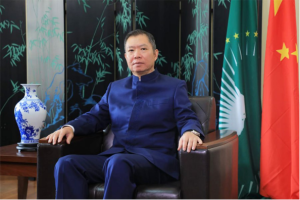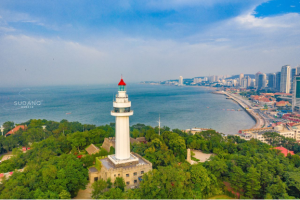China’s economy continued to develop in 2022 despite downward pressures, with GDP reaching a new level at 121.02 trillion Yuan ($17 trillion) to grow 3 percent annually, according to the National Bureau of Statistics (NBS) on Tuesday.
NBS said employment and prices were generally stable while food and energy security as well as people’s livelihood were effectively safeguarded. Meanwhile, the country retained sustained high-quality development while overall economic and social stability was maintained.
The country’s fundamental agricultural position was further consolidated. In 2022, the annual grain output was 68.65 billion kilograms, an increase of 0.5 percent over the previous year, maintaining a stable rate for the eighth consecutive year.
Industrial production remained a prominent “ballast” for China’s economic development. In 2022, the added value of all industries exceeded 40 trillion Yuan for the first time. Among these, the added value of the manufacturing industry reached 33.5 trillion Yuan, and China continued to retain its status as the world’s largest manufacturer.
Infrastructure construction was strengthened. By the end of 2022, China’s railway operating mileage reached 155,000 kilometers. Of which, high-speed rail reached 42,000 kilometers, ranking first in the world.
Industrial production sustained development as high-tech manufacturing grew
The added value of the primary sector was 8.83 trillion Yuan, up by 4.1 percent compared to 2021. Meanwhile, the added value of the secondary industry was 48.32 trillion Yuan, up by 3.8 percent year on year, and 63.87 trillion Yuan for the tertiary industry, rising 2.3 percent. The primary industry accounted for 7.3 percent of the GDP, while the secondary and tertiary industries took up 39.9 percent and 52.8 percent, respectively.
The total value added of major industrial enterprises increased by 3.6 percent over the previous year. The value added of the high-tech manufacturing went up by 7.4 percent, accounting for 15.5 percent of the added value of major industrial enterprises.
Consumer prices saw mild growth and producer prices for industrial products decreased
In 2022, consumer prices went up by 2 percent over the previous year. Producer prices for industrial products went up by 4.1 percent over the previous year. Meanwhile, the purchasing prices for industrial producers went up by 6.1 percent and the purchase prices for agricultural producers rose 0.4 percent year on year.
Incomes grew generally at same pace as economy
In 2022, the nationwide per capita disposable income of residents was 36,883 Yuan, a nominal increase of 5 percent over that of the previous year, and a real increase of 2.9 percent after deducting price factors, which was generally at the same pace with the growth of economy.
Annual per capita GDP was 85,698 Yuan, an increase of 3 percent over the previous year. Gross national income was 119.72 trillion Yuan, an increase of 2.8 percent compared to the previous year.
Chinese mainland population passed 1.41 billion in 2022
By the end of 2022, the national population was 1,411.75 million, which includes the population of 31 provinces, autonomous regions and municipalities but excludes residents of the country’s Hong Kong, Macao and Taiwan regions, as well as foreigners. This was a decrease of 850,000 from the end of 2021.
In 2022, the number of births was 9.56 million with a birth rate of 6.77 percent. The number of deaths was 10.41 million with a mortality rate of 7.37%. The natural population growth rate was -0.6 percent.
Nationwide employment was generally stable
At the end of 2022, there were 733.51 million employed people nationwide, of which 459.31 million were employed in urban areas, accounting for 62.6 percent of the nationally employed people.
In 2022, newly-added jobs for people in urban areas totaled 12.06 million. In December, the surveyed unemployment rate in urban areas was 5.5 percent.
The Ethiopian Herald March 1/2023




